
https://www.gosh.nhs.uk/news/stem-cell-treatment-can-improve-rare-skin-condition-in-children/
Stem cell treatment can improve rare skin condition in children
15 Aug 2025, 9:46 a.m.
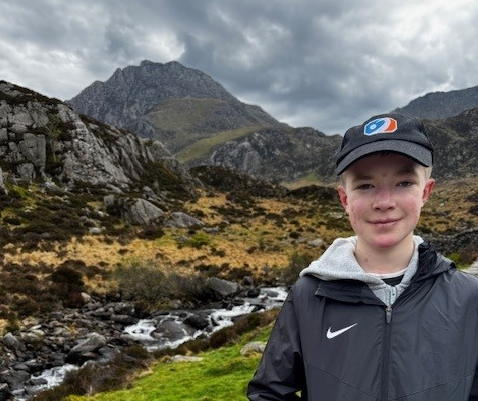
Gabrielius on holiday
Children with a rare skin condition have found their symptoms have improved through taking part in the largest clinical trial of its kind, led by clinicians at Great Ormond Street Hospital for Children (GOSH).
Clinicians found that regular mesenchymal stromal cell (MSC) infusions, often referred to as stem cells, improved symptoms for some children with the severe genetic skin condition, recessive dystrophic epidermolysis bullosa (RDEB).
The trial was made possible thanks to over £4.5 million funding from an NHS England and National Institute for Health and Care Research (NIHR) partnership, as well as funding from the charity Cure EB. The University of Sheffield Clinical Trials Research Unit oversaw the study and worked closely with GOSH’s research and development team.
What is recessive dystrophic epidermolysis bullosa (RDEB)?
RDEB is caused by a fault in a gene that makes collagen VII, a protein that holds the layers of skin together. Children with the condition have skin that is damaged by even the smallest amount of friction which causes severe blistering, deep wounds, and scarring. This creates an overwhelming inflammatory disorder that affects the function of most organs in the body, with the often onset of squamous cell carcinoma in the early adult years, a type of skin cancer which is the most frequent cause of death in RDEB patients.
There are around 150 children in the UK living with RDEB, and there is currently no effective treatment available.
Current standard of care focuses on managing the symptoms of the condition. This often includes daily dressing changes which can take several hours a day, popping blisters, dressing open wounds and trying to protect the skin. Eye ointments need to be applied throughout the day to prevent scratches to the cornea. These management techniques are incredibly painful.
Over time, complications arise such as a narrowing of the tube that connects the throat to the stomach (oesophageal strictures) which requires general anaesthetics for oesophageal dilatations, a procedure to widen the connecting tube. Many other problems are also caused due to severe inflammation, including anaemia, malnutrition, osteoporosis and cornea abrasions. Unfortunately, pain and itch worsens over time and don’t respond well to current treatment. Children with RDEB must have multiple hospital visits a year and procedures to manage their symptoms.
Trialling mesenchymal stromal cell (MSC) treatment
Children with RDEB took part in the trial from GOSH and Birmingham Children’s Hospital - the two nationally commissioned centres for paediatric EB in England. The children received MSC infusions that were taken from umbilical cord tissue, CORDStrom™, manufactured by INmuneBio. Previous trials have suggested that MSC treatments can promote wound healing, reduce inflammation and stimulate tissue regeneration.
The trial participants were split into two groups. Around half of the participants received two infusions of MSCs two weeks apart, and then after a nine-month gap, received a placebo two weeks apart. The other half of the participants received the placebo first, two weeks apart, and then after the nine-month gap, received the MSCs two weeks apart.
The trial was run as a ‘double-blind’ study, where neither the patients or families involved, nor the research team knew which group each patient was in.
Published in eClinicalMedicine, the results from 30 patients reported were positive. The largest effects were in children under the age of 10, and in the children with intermediate type of RDEB.
There was also a reduction in overall disease activity at six months in all the children with the most severe type of RDEB. These results were noticed when comparing the results of the placebo to the results of the MSC infusions.
These results - especially the greater improvement seen at six months - are consistent with the qualitative findings from children and families and are supported by other outcome measures used in the study, such as the IscorEB.
Gabrielius' story
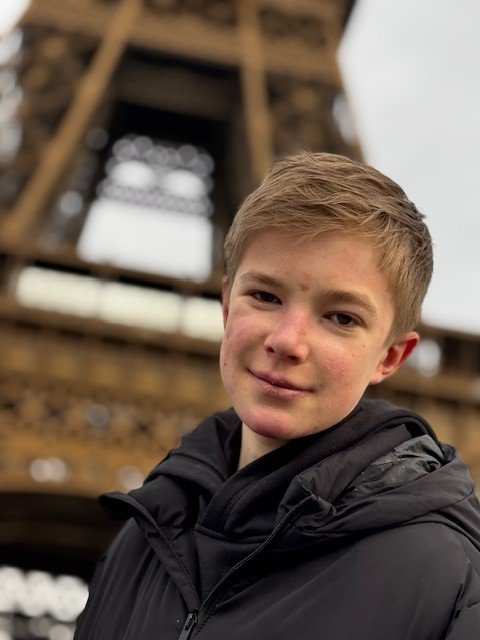
Gabrielius in front of Eiffel Tower
Gabrielius was one of the first children to participate in the trial. Born at his local hospital in Dagenham, the doctors immediately noticed a wound on Gabrielius' right leg and asked if they could take photos and send them to GOSH for further examination. Two weeks later, Gabrielius was officially diagnosed with RDEB.
During those two weeks, Gabrielius stayed in the hospital, where his mum, Jolita, was shown how to take care of his wounds.
Mum, Jolita, said: "The first two years were really hard as you had to watch him constantly – even rubbing his eyes could cause painful blistering. He couldn't even tell us how much pain he was in or where he was hurting. Now he’s older, he manages his condition day-to-day well despite being in constant pain, and we’ve had the support of the specialist team at GOSH with the same consultant who he’ll remain under until he’s 16-years-old.”
Now a high-spirited 12-year-old who loves Lionel Messi and speaks three languages, Gabrielius needs his bandages changing three times a day, or more frequently if he is injured. His condition also means he cannot do all the things a typical young person can enjoy, like playing football.
Gabrielius said: “I wanted to take part in the trial as I was excited to see if it could help improve my condition and so I could do more of the things I enjoy like playing football and spending time with my friends.”
Mum, Jolita, continued, “Gabrielius did really well on the trial. His wounds healed quicker, and his skin was less red and inflamed. His skin was also less itchy which also reduced him scratching. His sleep was also less disturbed as he didn’t need to have his special wound dressings changed as often, so this was a great benefit.”
Dr Anna Martinez, Paediatric Dermatologist and Lead of the National EB Service at GOSH and Chief Investigator, said: “Our study has demonstrated that CORDStrom™ was safe and can help reduce disease activity in some patients with RDEB. Administering the treatment early and at regular intervals appears to reduce itch and improve wound healing, which over time we hope will reduce inflammation, modify the condition and may reduce over time the future risk of squamous cell carcinoma. It’s fantastic to see how the patients, like Gabrielius, had improvements in their symptoms and their quality of life.”
INmuneBio have agreed to provide CORDStrom™ with no charge for a 12-month open label study for all children who took part in the trial.
Dr Anna Martinez continues: “The 12-month open label study will allow us to collect more data to hopefully show an increased benefit from treatments administered in children and young people with RDEB, to continue research in support of the treatment being rolled out more widely.”
Sharmila Collins, Founder Trustee of Cure EB, said: “Since funding the first trial and by contributing to Mission EB, we have been working towards bringing MSC infusions forward for all children in the UK with RDEB. We hope these cells will become part of routine clinical care to alleviate the significant suffering of children with this condition.”
NIHR Scientific Director for Innovation, Professor Mike Lewis, said:
"NIHR’s world-leading facilities, expertise and researchers through our infrastructure investments were vital in supporting the trial and recruiting patients in the UK."
"This partnership shows how research can open new possibilities for children living with rare and challenging conditions."
This research is built on the GOSH team’s previous work where they treated 10 children with RDEB using MSCs derived from bone marrow. This work showed the treatment was safe in children, as well as effective in reducing pain and itching for up to six months in some patients. The team also consulted the GOSH Young Persons’ Advisory Group on the development of trial documents and progress of the study.
This study was driven and led by the EB dermatology team at GOSH, and supported by wider colleagues including those in pharmacy, research governance, finance, NIHR GOSH Biomedical Research Centre and the NIHR GOSH Clinical Research Facility team where the infusions took place, exemplifying the ethos of a Research Hospital.
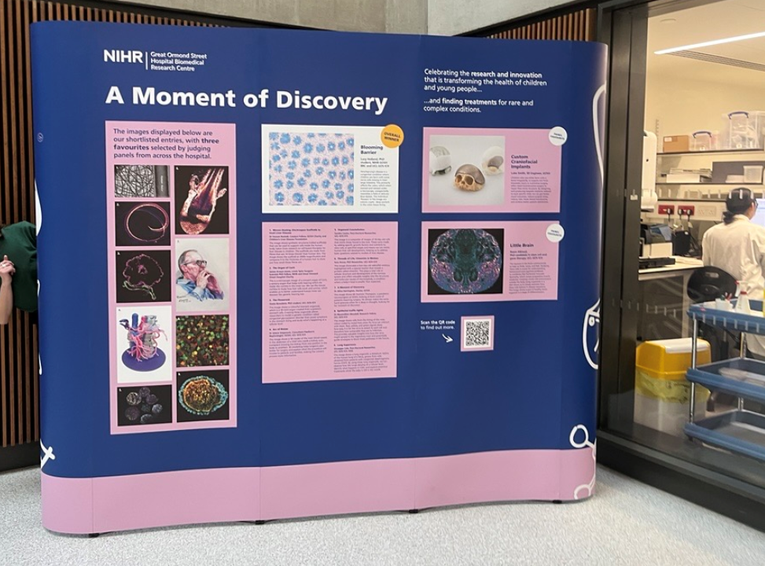
Fifth annual 'Moment of Discovery' image competition open 5-18 January
The annual Research and Innovation Image Competition, A Moment of Discovery, is back for the fifth year and open for entries between 5-18 January 2026.
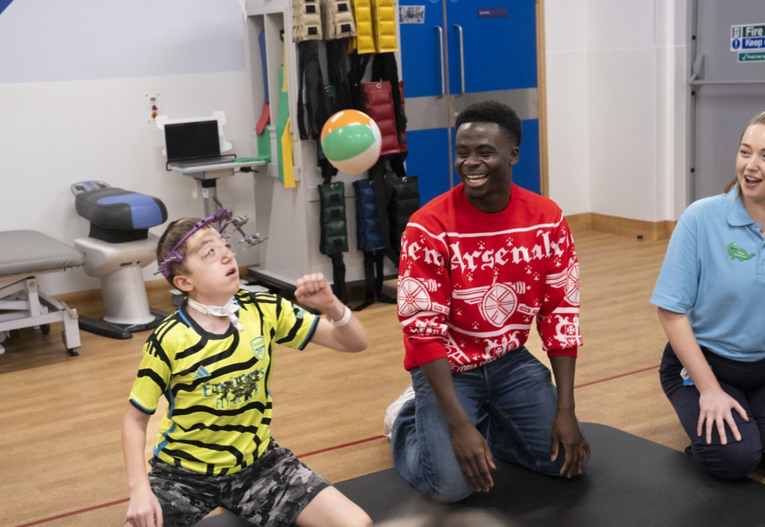
Arsenal stars bring festive cheer to patients, families and staff
GOSH was buzzing with excitement this month as players from Arsenal’s men’s and women’s first‑team squads paid a special visit to children, families, and staff.
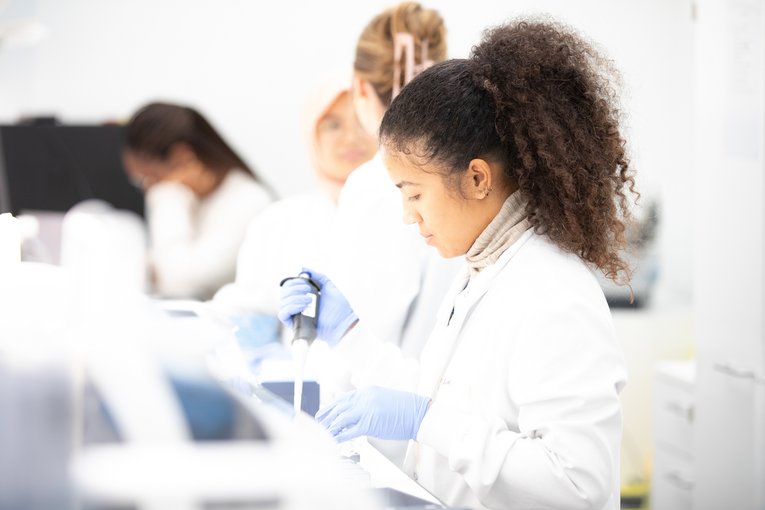
NIHR launches £13.7m investment into brain tumour research
The National Institute for Health and Care Research (NIHR) has announced a £13.7 million investment that will support ground-breaking research to develop novel brain tumour treatments in the UK.
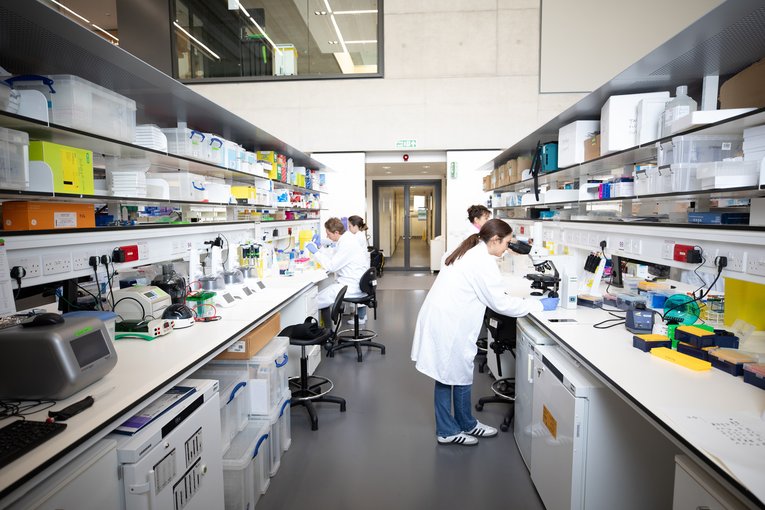
New consortium aims to help improve care for arthritis patients
A new UK-led research group, including Great Ormond Street Hospital and University College London, aims to improve the lives of children, young people and adults with arthritis by defining for the first time what being in ‘remission’ from arthritis truly